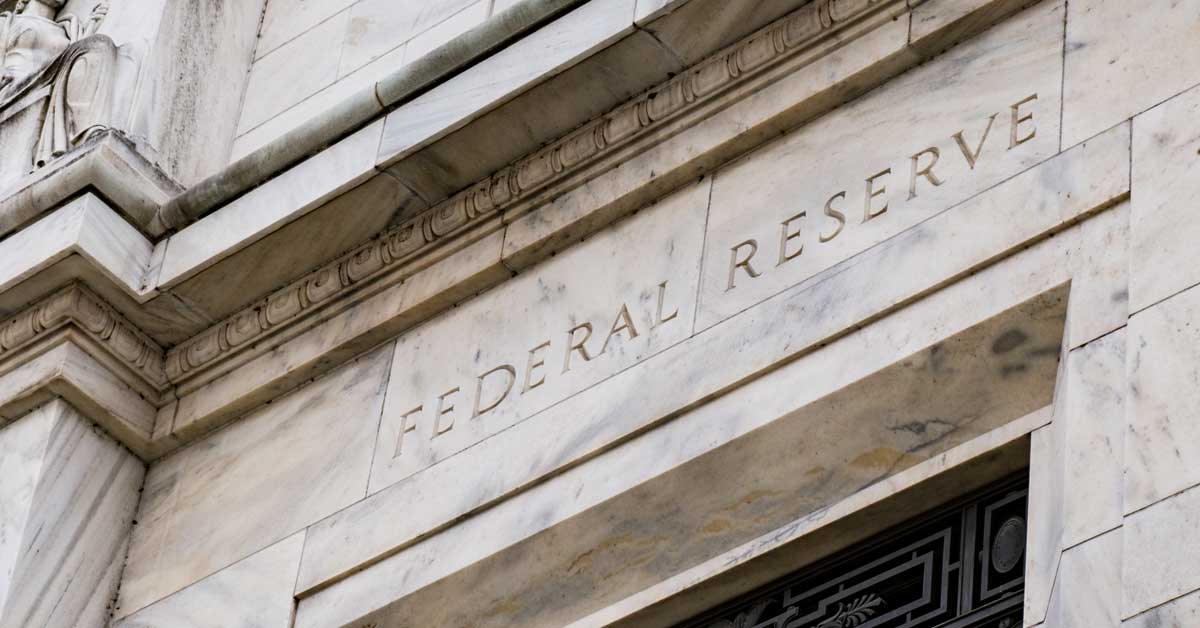As widely expected, the Federal Reserve opted to keep monetary policy steady at its December meeting, holding its anchor interest rate at the current level of 5.25% to 5.5%.
The benchmark rate remains at a 22-year high as the Fed continues to wrangle with pulling persistent inflation back down to a 2% target range. But it’s the third consecutive meeting in which the Fed has decided not to raise the rate further, a marked shift after more than a year of aggressive hikes.
Several economic indicators released during the leadup to the meeting of the central bank’s Federal Open Market Committee (FOMC) essentially telegraphed the Fed’s decision, including a Consumer Price Index (CPI) report earlier in the week that showed overall inflation up 3.1% year over year in November. That’s down from 3.2% in October and a vast reduction from the peak above 9% in summer 2022.
Meanwhile, the employment market has continued to moderate and the economy at large has shown signs of cooling after a third quarter that saw annualized gross domestic product growth of 5.2%. The statement released after the FOMC meeting acknowledged as much, with changed verbiage referring to the economy’s strong pace in the third quarter also noting that growth since then has slowed. The Fed also added language to the statement recognizing that, while inflation remains elevated, it has eased over the past year.
Also interesting was a curious one-word addition to the statement.
“In determining the extent of any additional policy firming that may be appropriate to return inflation to 2% over time, the committee will take into account the cumulative tightening of monetary policy, the lags with which monetary policy affects economic activity and inflation, and economic and financial developments,” the Fed stated. In its previous statement, that sentence appeared identically, save for the word “any.”
It’s a small change that’s likely to be music to the ears of Fed watchers across the mortgage lending and real estate industries.
“We added the word ‘any’ to acknowledge that we are likely at or near the peak rate for this cycle,” Fed Chair Jerome Powell said at the customary press conference after the FOMC’s meeting. “[Meeting] participants didn’t write down additional hikes that we believe are likely, so that’s why we wrote that down. But participants also didn’t want to take the possibility of additional hikes off the table, so that’s really what we were thinking.”
Powell’s overt comment that the peak rate has likely been reached is the first such sign from the Fed and an early Christmas present for the battered housing sector.
“Mortgage markets should be pleased that Jerome Powell acknowledged that the Fed is at or near the end of rate increases for this tightening cycle,” said Marty Green, principal at mortgage law firm Polunsky Beitel Green. “While not completely removing the possibility of a rate increase in 2024, the changes in the policy statement made clear that this bullet appears to be kept in the Fed’s holster rather than in its gun ready to fire.”
Powell also said that the Fed doesn’t believe a big downturn is in the cards, although he didn’t altogether dismiss the possibility.
“I have always felt since the beginning that there was a possibility, because of the unusual situation, that the economy could cool off in a way that would enable inflation to come down without the kind of job losses that have often been associated with high inflation and tightening cycles,” he said. “So far, that’s what we’re seeing. That’s what many forecasters on and off the committee are seeing.
“This result is not guaranteed. It is far too early to declare victory, and there are certainly risks. It’s certainly possible that the economy will behave in an unexpected way. It’s done that repeatedly in the post-pandemic period. Nonetheless, where we are is we see [economic cooling without widespread job losses].”
Selma Hepp, chief economist at CoreLogic, foresees the beginning of normalization.
“The Federal Reserve’s decision today marks two important milestones. The first is that the Fed confirms that it believes its actions helped tame inflation while also preventing the economy from slipping into recession,” Hepp said. “The second is that housing can begin the slow process of returning to a more normalized rate environment. However, we expect it will be several months before housing returns to smoother sailing and there may yet be some choppy waters ahead.”
Max Slyusarchuk, CEO of A&D Mortgage, agreed about the direction of the rate curve, projecting the slow decline of interest rates through 2024. Like Hepp, he also cautioned that stakeholders, especially homebuyers, shouldn’t expect immediate rewards.
“We don’t expect rates to fall that much in this period and it may not offset rising home prices in hot housing markets,” Slyusarchuk said. “So, homebuyers who wait on the sidelines for better rates next year may find the waiting game didn’t pay the dividends they expected.”
Homeowners who recently bought properties, however, could reap major benefits if rates fall far enough below those of their current loans.
“Since January 2021, there have been 3 million new mortgages originated with interest rates of 6% of higher, the total balance of which being over $1 trillion,” noted Michelle Raneri, vice president of U.S. research and consulting at TransUnion. “The monthly payments of each of these high-interest mortgages averages $2,201.
“If interest rates dropped to even 5.5%, it could result in significant savings for these homeowners, as refinancing at that rate could result in an average monthly payment of $1,917 for them, a reduction of $284 every month. This would represent nearly $300 a month that these homeowners would be able to use elsewhere in this continued high cost-of-living environment in which every dollar counts.”
With hand-wringing over further rate increases now apparently in the rearview mirror, speculation now pivots toward how far and how fast rates could start decreasing.
“The pace of rate reductions in 2024 is now the focus as inflation concerns continue to fade,” Green said. “While nobody in the mortgage world would say, ‘Tis the season the season to be jolly,’ based on current market conditions, the Fed’s outlook at its December meeting points to an increased possibility of a happier new year.”






